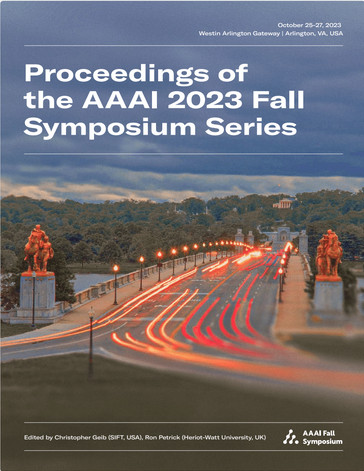Growing an Embodied Generative Cognitive Agent
DOI:
https://doi.org/10.1609/aaaiss.v2i1.27694Keywords:
Embodiment, Constructivism, Perception, Categorization, Affordances, Predictive Coding, Common GroundAbstract
An evolutionary perspective on embodiment puts maintenance of physiology within a functional envelope as the brain’s base goal, with all other goals as refinements. Thus, all goals have physiological perturbation for their motivation and allostatic recovery as their signal of fulfillment. From this account, two entailments emerge. First, an object’s properties are not intrinsic to the object but a situated function of the morphology of the object and the affordances required by the goal. Second, categories do not exist without reference to some goal; they are constructed at the time of perception by blending prior conceptual knowledge to create an understanding of the perception with respect to the goal. Our thesis is that generative large language model (LLM) architectures are part of the solution to creating artificial organic-like cognitive architectures, but that LLMs as currently trained are generative only at a surface-level of behavior rather than deeper levels of cognition and, furthermore, that generative architectures must be coupled with an embodied cognitive agent architecture, which suggests both the additional levels at which generativity must operate and capabilities that the combined architecture must support.Downloads
Published
2024-01-22
Issue
Section
Integration of Cognitive Architectures and Generative Models

